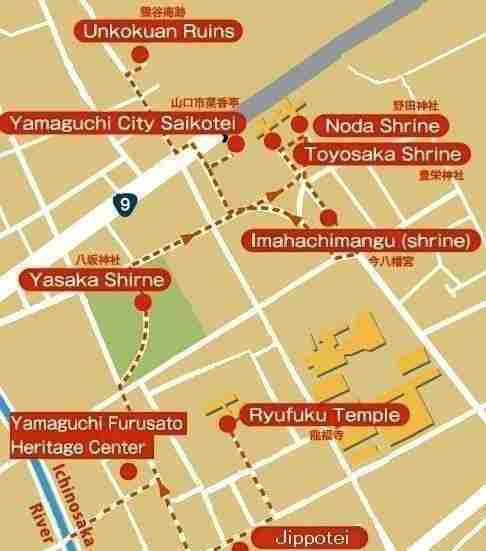Yamaguchishi City Saikotei
- TOP
- Yamaguchishi City Saikotei
Yamaguchi City Saikotei is a facility that opened in October, 2004 as a sightseeing base in Yamaguchi with many historical artifacts, it is also a place for citizen exchange.
The building was originally a luxurious traditional Japanese restaurant named Gion Saikotei which operated from around 1878 to 1996. It was later relocated and refurbished. It is a precious building which tells the history of Early Modern Period of Japan.
Many calligraphy writings are displayed here, including those written by celebrities and Prime ministers who held parties at the restaurant.
Main displays
- Calligraphy Writings (written by Politicians who had visited Saikotei)
Writers: Hirobumi Ito, Aritomo Yamagata, Taro Katsura, Giichi Tanaka, Nobusuke Kishi, Eisaku Sato, Kakuei Tanaka, Shinzo Abe(They were Japanese Prime ministers) and Sanetomi Sanjo, Takayoshi Kido, Kaoru Inoue, Yosuke Matsuoka - Vessels and artwork that were used in the restaurant are also displayed.
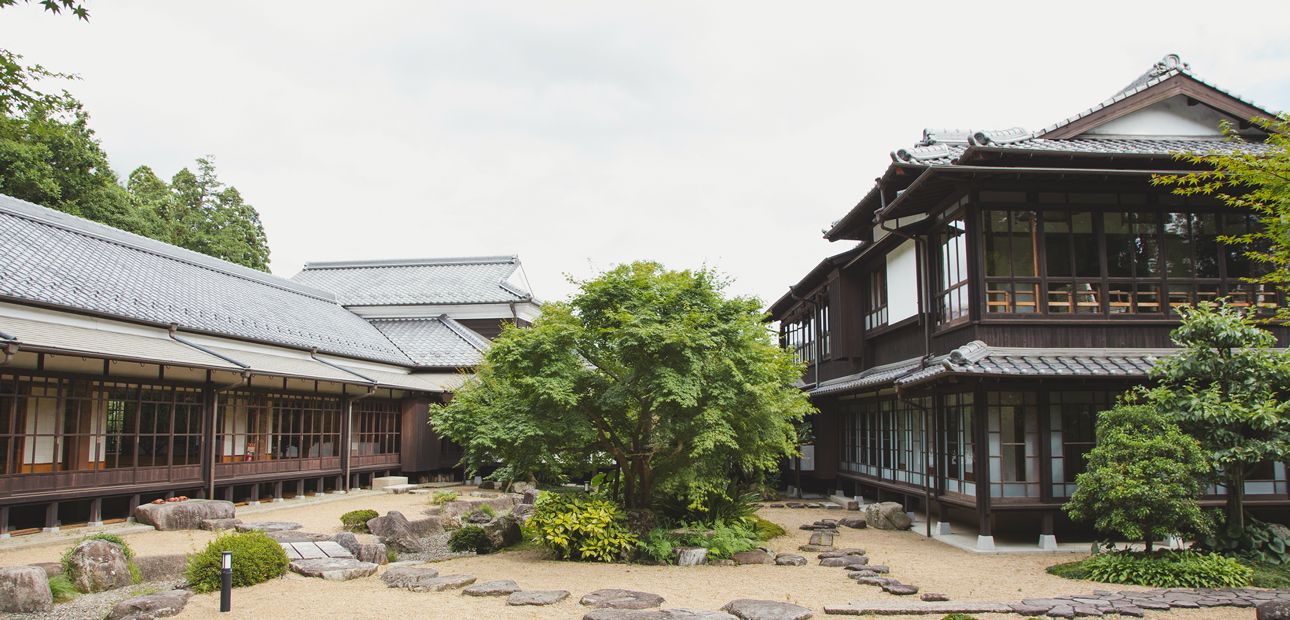
| Official Name | Yamaguchi City Saikôtei, Museum and Reception Hall |
|---|---|
| Address | 1-2-7 Tenge Yamaguchi City, Yamaguchi, 〒753-0091 JAPAN |
| TEL | 083-934-3312 |
| Opening Hours | 9am-5pm |
| Admission Fees |
Facilities:Two wheelchairs for the hall and handicap toilets Conditions of entry
|
| Closed |
|
| Website | https://saikoutei.jp |
| MAILFORM | |
| Ground area | 2,979m2 |
| The floor area |
|
| Structure | a two-storied wooden building |
| Parking |
|
Public transportation access
- By Rail / Yamaguchi Station (a bus or taxi)
- By taxi/ About 2 km from Yamaguchi Station
- By Community bus/ Noda bus stop (on foot 3 minutes)
- By City bus/ Noda Gakuen Mae bus stop (on foot 2 minutes)
- By Car / about 7 km from Yamaguchi interchange(Route 262 to a No. 9 line, next to the Nanaoyama tunnel)
Explanation
“Ryotei” is the general name for a luxurious traditional Japanese restaurant, where guests dine on Japanese cuisine. Ryotei is often used for business negotiations, banquets, or receptions.
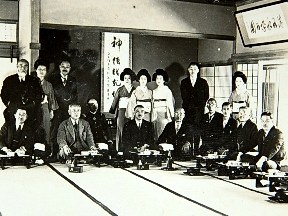
Saikotei was opened around 1878 by Kobe Saito who had been the lords’ cook until 1871.
During its 126 years of history, many people visited it until they closed in 1996.
In 2004, it reopened as a museum & reception hall for Yamaguchi City.

Eastern traditional culture has “Kigo.” It means writing words or phrases with brushes. Celebrities or Calligraphers are commissioned to write words or proverbs.
Most Ryotei have 1 or 2 of these writings.
There were the 29 of these writings at Ryotei Saikotei. It had the most “Kigo” of any place in all of Japan.You can see the banners still to this day.

In addition, Yoshisuke Aikawa the founder of the Nissan concern, left a hanging scroll of calligraphy, and Hekigoto Kawahigashi, a haiku poet, left his works. Also, global philosopher, Kitaro Nishida, visited here although he did not write any calligraphy.

The room that was decorated with the hanging scrolls has 33 writings and 53 traditional Japanese paintings.There are 15 folding screens. You can see some of them in the exhibition room.
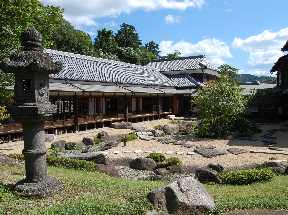
The garden is a reproduction of the original garden that was created in 1925. It is a Japanese style garden. The large stones and lanterns were used from ancient times, and the lake was purposely left without water to create a dry landscape.
Explanation of the main calligraphy
「快作楽」三条実美
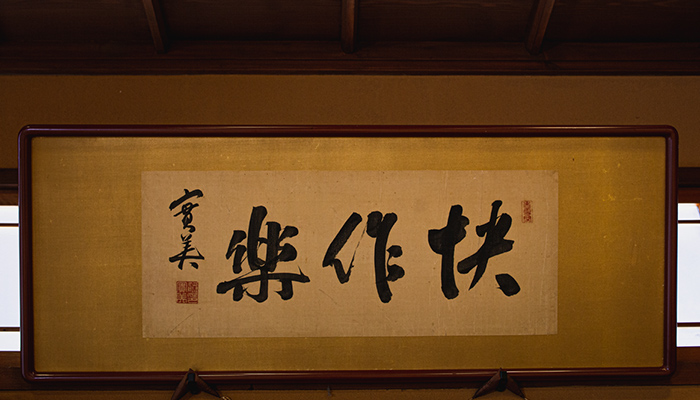
His writing means: Anything can be joyful according to feelings.
「清如水平如衡」木戸孝允
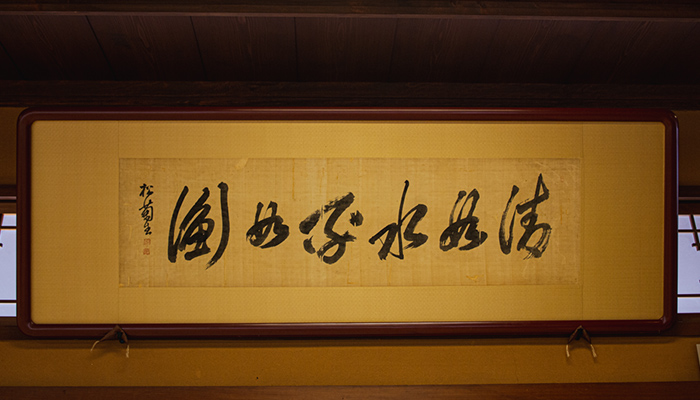
His writing means: Pure like water, balanced like a scale.
「四面菜香滌気心」井上馨
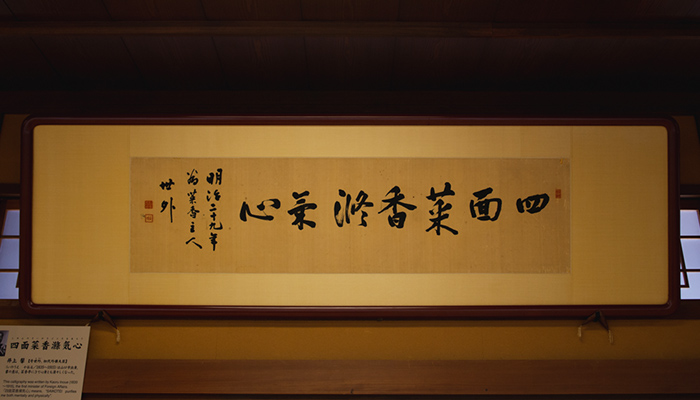
His writing means: Coming to Saikotei refreshes both body and mind.
「菜香亭 借用齊幸之語音而与亭名」井上馨
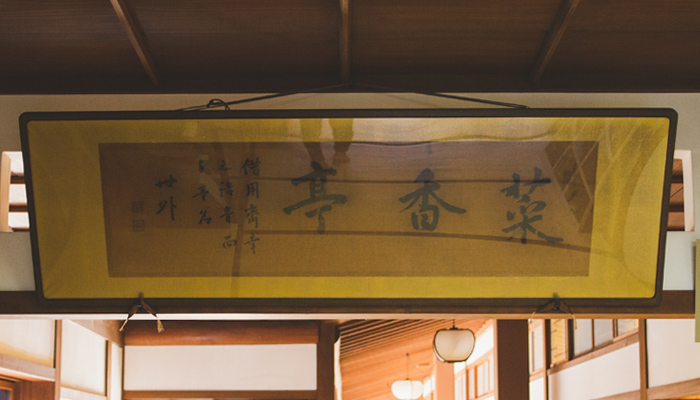
It was written by Kaoru Inoue who named this Ryotei “Saikotei”
「一家天地自春風」伊藤博文
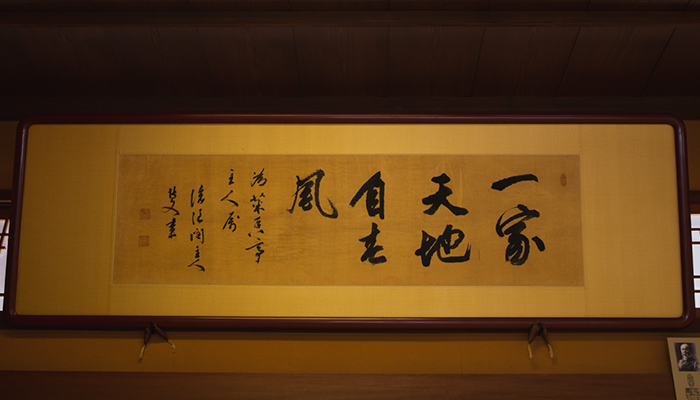
His writing means: When hearts are united, peace grows forth.
「江山豁如」山県有朋
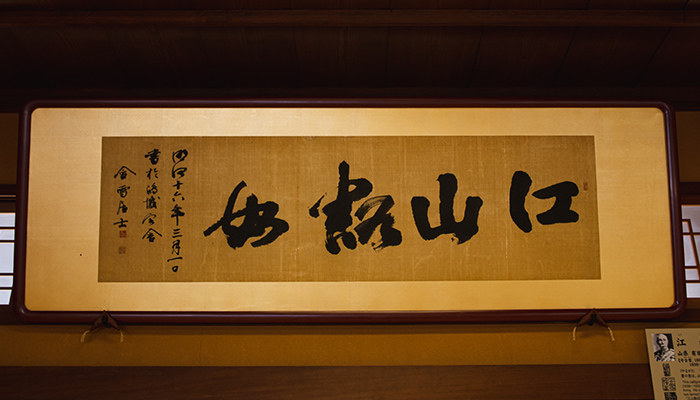
His writing means: The view is good and relaxes the heart.
「広公益開世務」寺内正毅
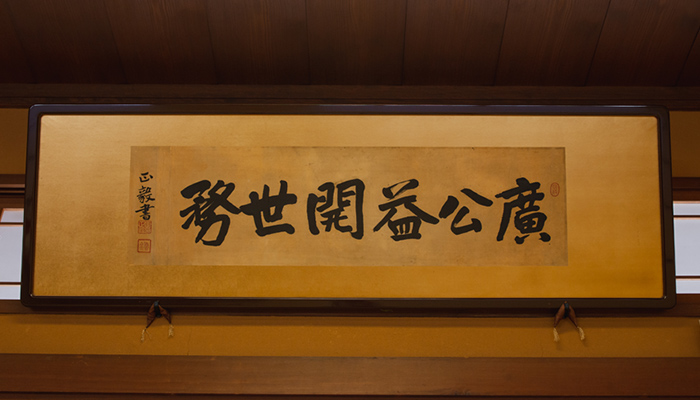
His writing means: Let us begin to spread societal gains and work to better this world.
「義気凌秋日」田中義一
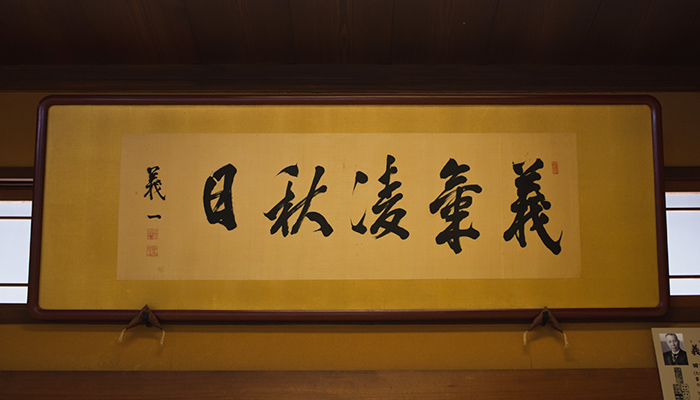
His writing means: I will not lose my feeling of righteousness to anyone.
「澄心静慮」岸信介

His writing means: One should compose one’s heart and consider things quietly.
「独坐大雄峯」佐藤栄作
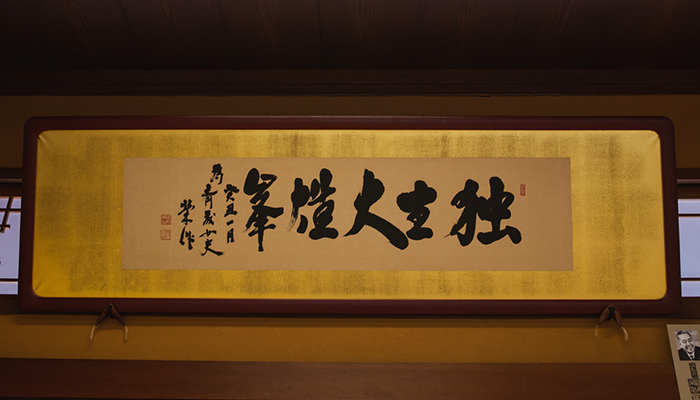
His writing is from a Zen proverb meaning: That I exist here and now is the most amazing thing.
「微風和暖」田中角栄

His writing means: The breeze is warm and gentle.
「我が道を行く」竹下登

His writing means “Going my way”.
「寂然不動」安倍晋三

His writing means: Although my heart is calm and quiet, it will not be moved by anything. My convictions will not be bent.
「鶴駕入鴻城 皇恩潤二州」桂太郎
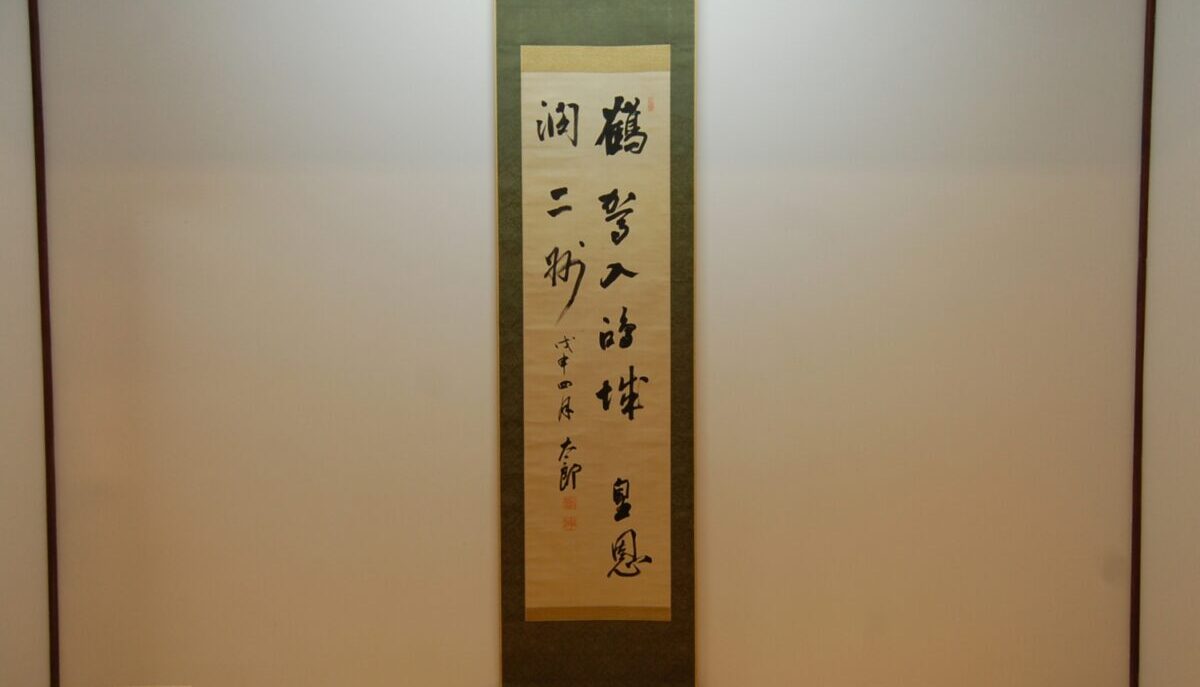
Visitor Information
Concession shop
(Souvenirs and gifts are sold.)
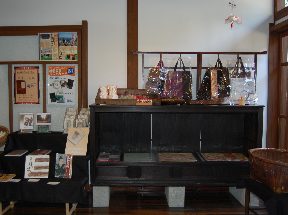
Example
- Yamaguchi Saikotei Pictorial Record ¥1,100
- Commemorative stamp for visiting the facility ¥300
- Japanese style place mat ¥500~
- Postcards ¥110
Powdered green tea service (Matcha)
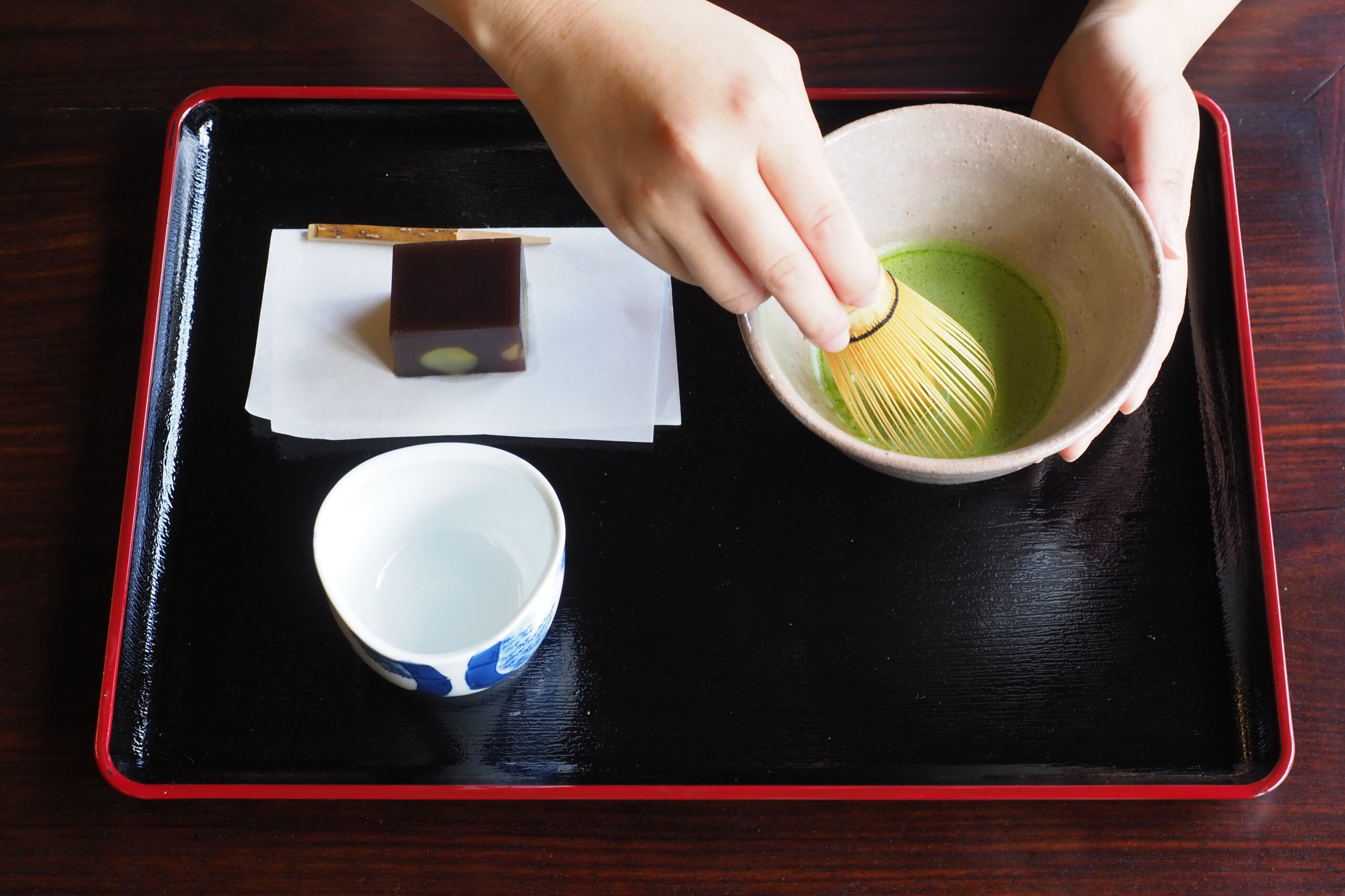
You can enjoy the green tea with Japanese sweets in the Hall.
Reservation are required at least a day in advance.
- Price: ¥500
- Time: 10.00a.m. – 4.00p.m.
Bicycle Rental
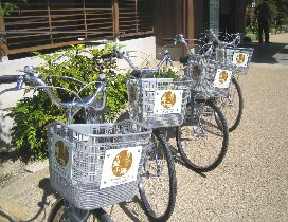
Bicycles can be rented from 9am to 5pm.
Charge: Bicycle
- ¥300/under 4hrs
- ¥500/over 4hrs
Kimono Fitting (Reservation required)
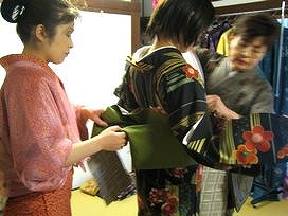
Rickshaw (Reservation required)
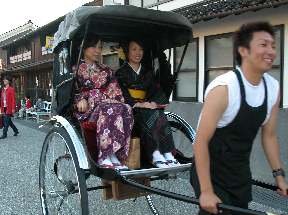
Yamaguchi Saikotei also has rickshaws that can be ridden by reservation.
The course circles around Yamaguchi Saikotei. It runs past Yasaka Shrine, Ryufukuji Temple, Jippoutei, old Japanese style house.
Charge
- 30 minutes ¥4,500 : one person / ¥8,000 : two persons
- 60 minutes ¥7,500 : one person / ¥14,000 : two persons
Reservations: Please call Saikotei: 083-934-3312
Nearby Attractions (Free Facilities)
UnkokuAn Ruins (hermitage)
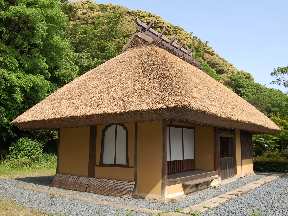
- 3 minutes walk from Saikotei
- Japan’s greatest artist, Sesshu – the creator of Sesshu-tei- had his art studio here. The studio was rebuilt in 1884 using old wood from ancient shrines and temples.
Noda shrine & Toyosaka Shrine
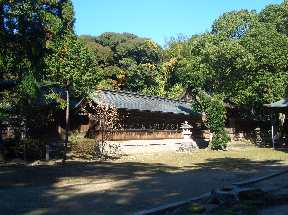
- 2 minutes walk from Saikotei
- The shrines dedicated to the late Motonari Mori and Takachika Mori. They were great ancestors of the Mori family who had been the lords of Yamaguchi prefecture during Japan’s early modern period. These shrines were built on the spiritual power spots of the city in 1872.
Imahachimangu (Shrine)
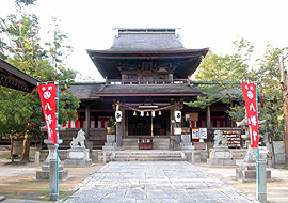
- 3 minutes walk from Saikotei
- This shrine dedicated to the spirit of indigenous deities. The wooden building was built about 500 years ago. Imahachimangu is designated as an Important Cultural Property of Japan.
Yasaka shrine
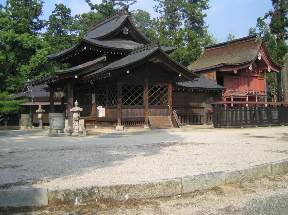
- 3 minutes walk from Saikotei
- The shrine dedicated to Susano no Mikoto; a god in Japanese mythology. The building painted in red was built about 500 years ago. This shrine is designated as an Important Cultural Property of Japan.
The Yamaguchi Furusato Heritage Center
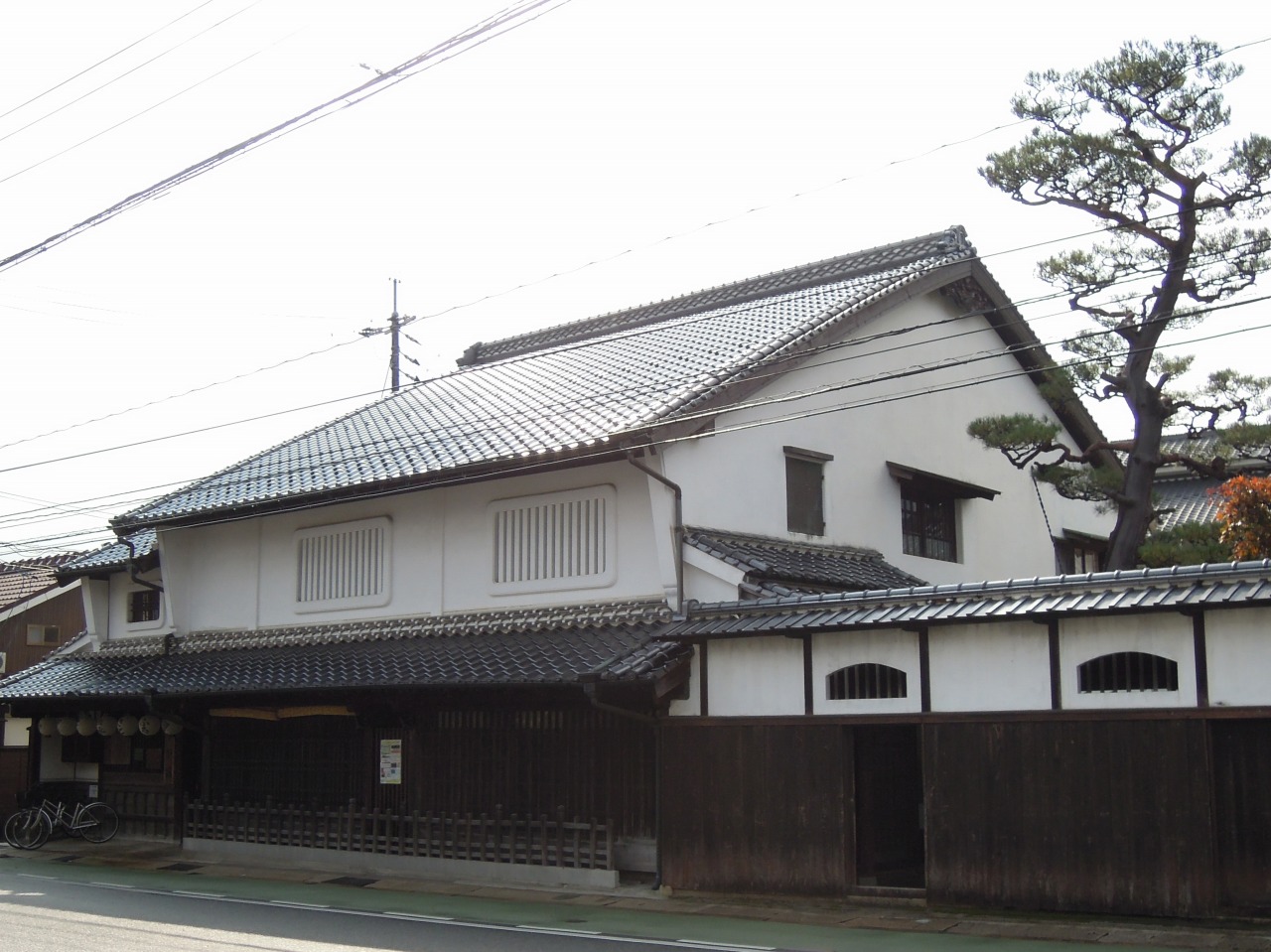
- 7 minutes walk from Saikotei
- This Japanese-style building was a Sake(Nihonshu) merchant’s house named Nomura. It was built in 1886. They produced Sake and sold it here. This house tells us about what the merchant life was like at the time.
Ichinosakagawa (River)
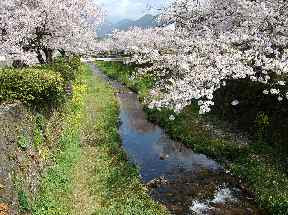
- 10 minutes walk from Saikotei
- This river runs through Yamaguchi City. You can see cherry blossoms by the river in spring, and fireflies fly around in summer. In the 1970s, construction was done to preserve the environment of the banks of this river, first of its kind in Japan. River habitat for fireflies became easier because of this construction.
Ruins of the Lord Ouchi’s Mansion
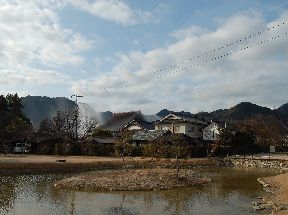
- 12 minutes walk from Saikotei
- The site had Lord Ouchi’s Mansion from the Middle Ages. The Ouchi family traded with China and Korea, and had strong influence in the western part of Japan. Once, Francis Xavier visited here. The garden has been restored to the medieval style.
Ryufukuji (Temple))
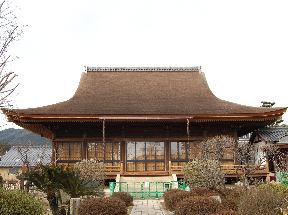
- 12 minutes walk from Saikotei
- This temple was built to mourn the last heir of the Ouchi family, Yoshitaka Ouchi. The main hall of the temple is about 500 years old, and it is designated as an Important Cultural Property of Japan.
Jippotei (Historical Residence)
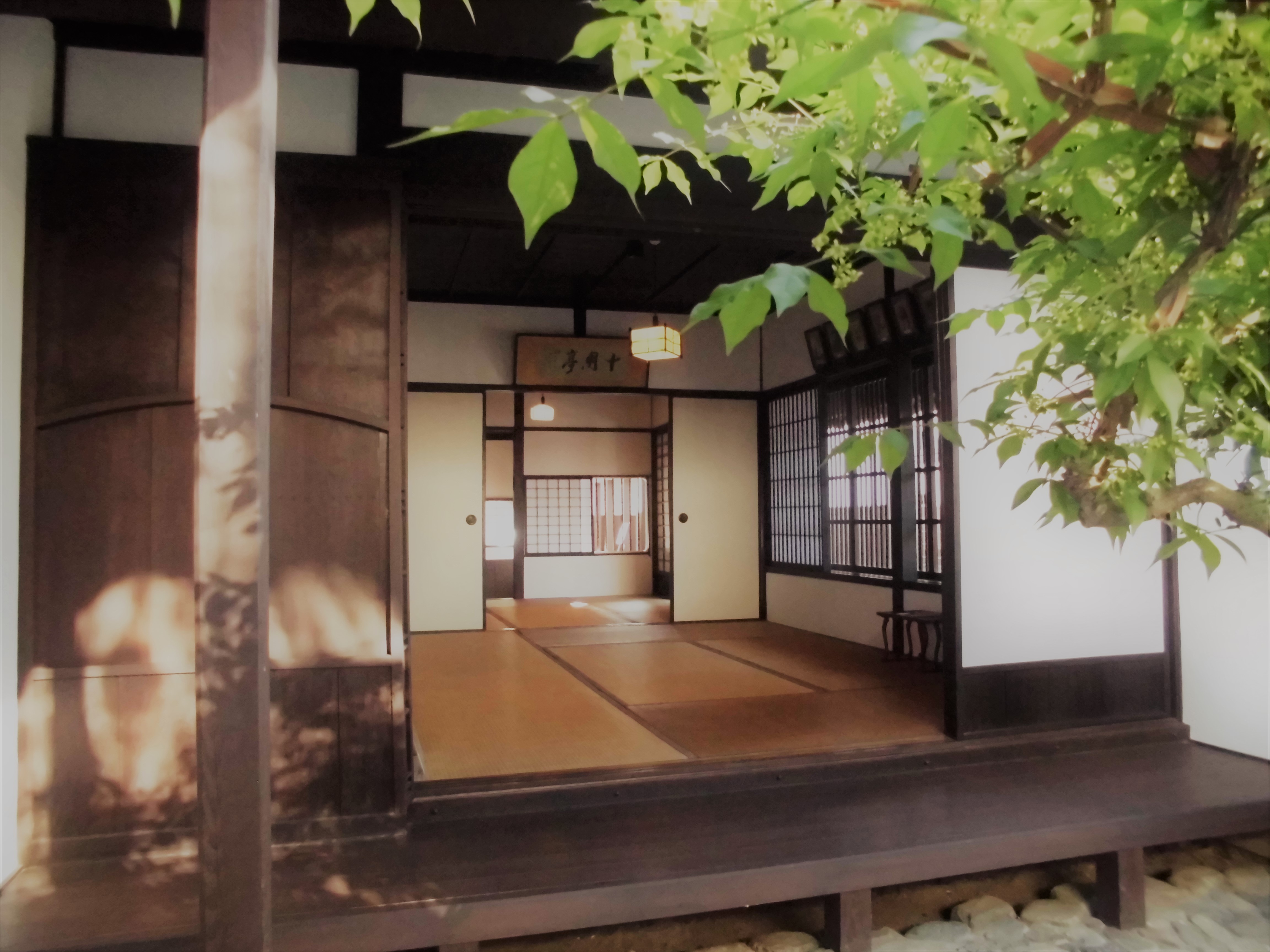
- 15 minutes walk from Saikotei
- This building was built around 1800. It was the mansion of a merchant. Many historical persons have stayed over night and held meetings here since the castle town was relocated from Hagi to Yamaguchi city in 1863.
